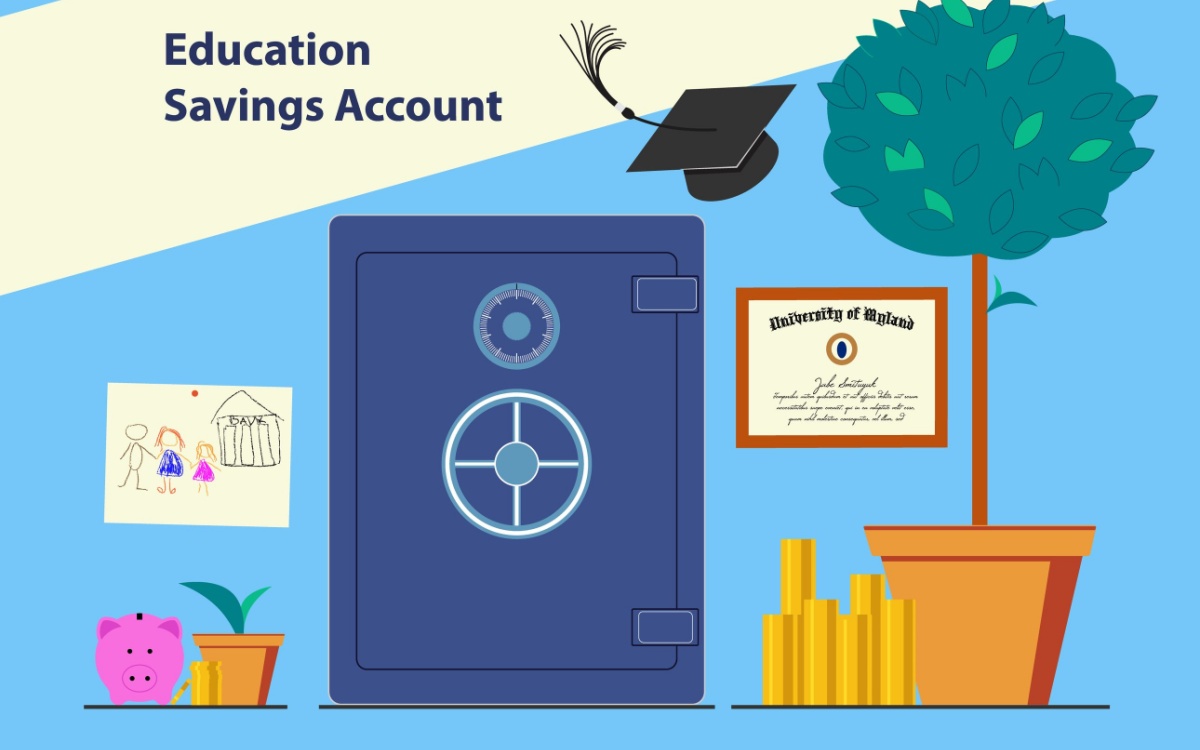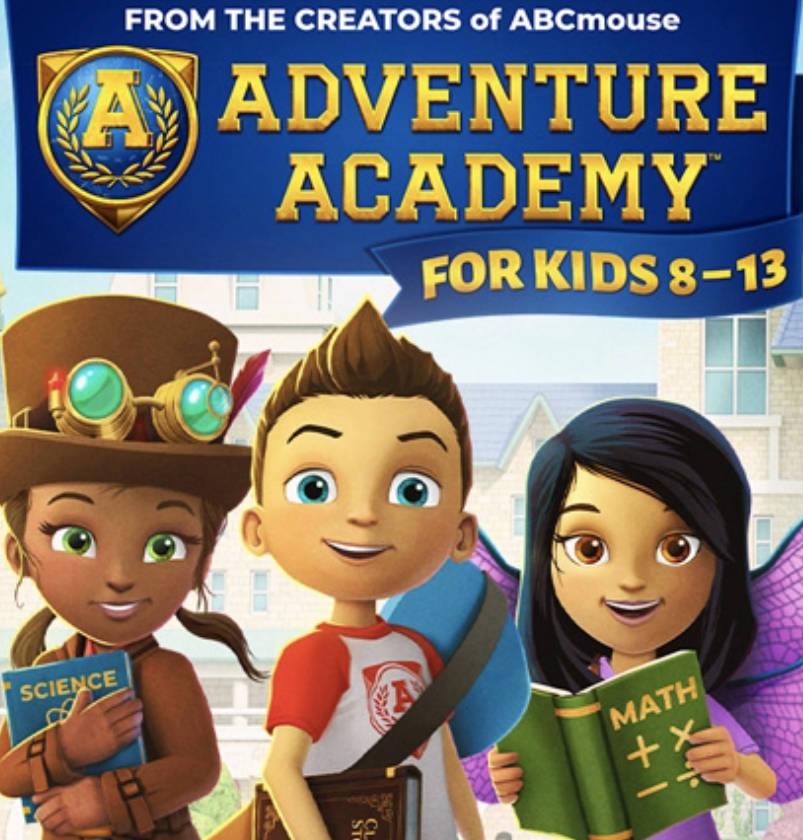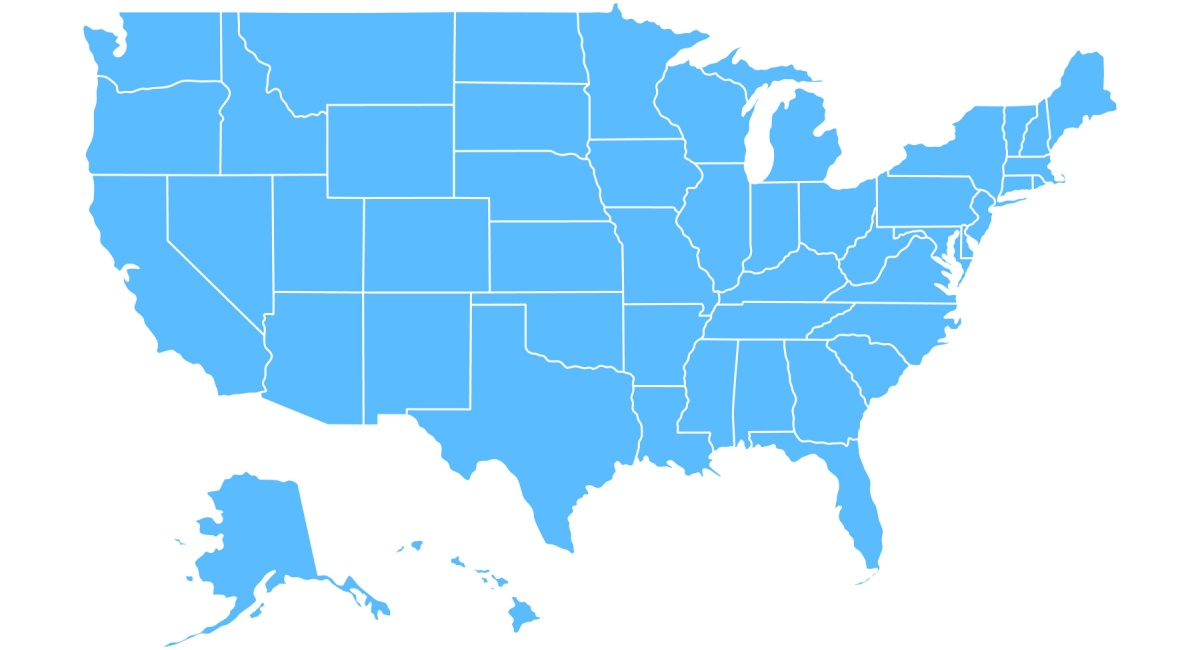
How to Use Education Savings Accounts (ESA) for Early Education
Learn about your state’s program to help offset early education costs, such as online learning programs and more.
Education costs can really add up, no matter what schooling option you choose for your children. Many states in the U.S. offer programs to help cover those costs, such as tax credits and education savings accounts (ESAs). Families can use these programs to help pay for tuition, educational services and materials, and even online learning programs like ABCmouse.
Navigating these programs can feel daunting at first, and having a summary of your state’s program, its rules, and eligible expenses, can make it easier to take advantage of these programs. Find your state below, as well as other tips for using ESA accounts.
Home Educators! Along with a state-by-state guide to ESAs, we also have a state-by-state guide to homeschool laws and resources.
Jump to Your State’s ESA Guidelines or Tax Credit Program
What Are Education Savings Accounts (ESAs)?

Education Savings Accounts (ESAs) are government-funded accounts that provide families with public education funds to use for a variety of educational expenses. Families can use ESA funds for private school tuition, online learning programs, tutoring, homeschooling expenses, educational therapies, and even college savings. The goal of ESAs is to give families more flexibility and choice in tailoring their children’s education to their needs.
While ESAs are also often used to help save for and fund college expenses, similar to a 529 Plan, this article focuses on using ESA funds to help offset costs of educational expenses associated with younger children.
How ESAs Work:
- ESA funds are typically deposited into a state-managed account and allocated per eligible student.
- Families can choose how to spend the funds on approved educational expenses.
- Most states require accountability measures, such as approved vendors, receipts, or periodic audits to ensure funds are used appropriately.
Eligible ESA Expenses
Each state’s ESA program specifies the expenses it covers, usually in very specific language. Specifics of ESAs vary by state. Be sure to check your state’s guidelines.
Common expenses covered by ESAs (not all states cover these):
- Nonpublic school tuition and fees
- Transportation to and from school outside of home district
- Textbooks and learning materials
- School uniforms
- Tutoring
- Educational therapy services
- Supportive technology devices
- Computers and educational software
- Online learning programs
In many states, ABCmouse subscriptions and other learning programs may be covered under educational software or online learning programs. Some states have approved vendor lists, which may include ABCmouse or its parent company, Age of Learning, Inc. In other states, check with the ESA program directly to see if these fees are covered.
Eligible Age of Learning Educational Products For Use with ESAs
You may be able to use your ESA fund on the following Age of Learning products. Check with your state guidelines and your vendor’s (ClassWallet, Odyssey) list of approved programs. If you do not see Age of Learning’s products as pre-approved options, you can request approval through your vendor, though approval is not guaranteed.
Reading IQ

ReadingIQ offers over 1,000 books for children ages 2 through 10 and makes it easy to track and monitor your children’s progress as he or she reads and learns. You can view detailed reports on how many books your children are reading, the level he or she is reading at, and more.
ABCmouse

ABCmouse offers a research-validated curriculum for preschool through 2nd grade, with more than 10,000 individual learning activities and over 850 complete lessons along a personalized learning path. The app encompasses key academic subjects, including literacy, math, science, health, and social studies, and offers many art- and music-based activities.
Adventure Academy

Adventure Academy immerses elementary- and middle-school-age students in a safe virtual world where every activity is designed to build critical knowledge in academic subjects, including language arts, math, science, social studies, and more.
With thousands of activities to choose from, including videos, games, books, quizzes, and other interactive elements, kids can build essential knowledge, pursue their interests, and personalize their learning experience by creating an Avatar, completing Quests, and interacting with their peers.
States Offering Education Savings Accounts (ESAs) and Similar Programs

Many states have implemented ESA programs, each with unique guidelines regarding eligibility, funding amounts, and approved uses. It’s important to note that the landscape of educational choice options is continually evolving. Stay informed by regularly checking official state resources for the most detailed and up-to-date information.
Alabama
Program Name: CHOOSE (Creating Hope and Opportunity for Our Students’ Education) Act of 2024
Program Website: https://classwallet.com/alchoose/
Eligibility:
- Household income that does not exceed 300% of the federal poverty level guideline for the 2024-25 tax year
- Alabama resident in grades K-12. Kindergarten students must turn 5 by September 1, 2025.
Benefits:
- $7,000 per student per participating school
- $2,000 per student per home education program ($4000 max per family)
Funds Disbursement: ClassWallet
Covered Expenses: Tuition and fees at participating schools, plus tutoring, online learning programs, educational therapies, learning materials, and more from approved education service providers.
Arizona
Program Name: Empowerment Scholarship Program
Program Website: https://www.azed.gov/esa
Eligibility:
- Arizona resident in public, private, or homeschool in grades K-12. Kindergarten students must turn 5 by January 1 of the contract year.
- Also includes preschool-age children with a documented disability. See more eligibility categories here.
Benefits:
- Award amount is 90% of the state funding that would have otherwise been allocated to the school district or charter school for the qualified student, averaging between $4,000 and $9,000 per student.
Funds Disbursement: ClassWallet
Covered Expenses: School tuition at a qualified school, curriculum, home education, tutoring, online learning programs, and more.
Arkansas
Program Name: Education Freedom Account (EFA) Program
Program Website: https://dese.ade.arkansas.gov/offices/office-of-school-choice-and-parent-empowerment/education-freedom-accounts
Eligibility:
- All Arkansas K-12 students are eligible with some being prioritized, such as returning EFA participants; students with special needs; students from low-performing schools; families of military, first responders, and law enforcement; and first-time kindergarten students.
Benefits:
- Non-Succeed students: $6864 total; $1716 quarterly
- Succeed students: $7627 total; $1906.75 quarterly
Funds Disbursement: ClassWallet
Covered Expenses: Tuition, testing, educational supplies, curricula, tutoring, instructional services, supplemental learning materials, online learning programs, and more.
We’re Already Approved! ReadingIQ, ABCmouse, and Adventure Academy are already approved expenses for use with an Arkansas ESA account.
Florida
Program Names:
- Family Empowerment Scholarship for Educational Options (FES EO)
- Family Empowerment Scholarship for Students with Unique Abilities (FES UA)
Program Website: https://www.fldoe.org/schools/school-choice/k-12-scholarship-programs/fes/
Eligibility:
- FES EO: Resident of Florida eligible to enroll in a K-12 public school. Priority is given to families whose household income level does not exceed 185% of the federal poverty level or students in foster care or out-of-home care, then to students whose household income level exceeds 185% of the federal poverty level, but does not exceed 400%.
- FES UA: Resident of Florida aged 3 or 4 or eligible to enroll in a K-12 public school; must have an IEP or disability diagnosis from a licensed psychiatrist or psychologist.
Benefits:
- FES EO: Varies by student; average amount in 2024 was $7,950
- FES UA: Varies by student; average amount in 2024 was $10,000
Funds Disbursement: Scholarship funding organizations (SFO)
Covered Expenses:
- FES EO: Private school tuition and fees for approved institutions, approved home education programs, transportation costs to public school other than the one assigned (up to $750), and more
- FES UA: Private school tuition and fees for approved institutions, approved home education programs, tutoring, higher education costs, specialized services, online learning programs, and more
Georgia
Program Name: Promise Scholarship Act (First year: 2025-26)
Program Website: https://mygeorgiapromise.org/
Eligibility:
- Enrolled in a Georgia public school for two semesters or entering kindergarten
- Live in the attendance zone of a school included on the Governor’s Office of Student Achievement list of lower performing schools
- Parent has lived in Georgia for at least one year
Benefits: $6,500 per eligible student
Funds Disbursement: Online platform (under development)
Covered Expenses: Tuition, tutoring, required textbooks, specialized services, and transportation (up to $500 per year) from an approved list
Indiana
Program Name: Indiana Education Scholarship Account (INESA)
Program Website: https://www.in.gov/tos/inesa/
Eligibility:
- K-12 students with disabilities, and their siblings, between 5 and 22 years old.
- Student must be a member of an Indiana household with an annual income of not more than 400% of the amount required for the individual to qualify for the federal free or reduced-price lunch
Benefits: Students with a disability may receive up to $20,000 and their siblings may receive up to $8.000
Funds Disbursement: ClassWallet
Covered Expenses: Tuition and fees at approved schools and learning programs, tutoring, educational materials and supplies, transportation services, and more
Did You Know? Indiana has both an Education Scholarship Account (ESA) program and a School Scholarship Tax Credit program, designed to help families with private school tuition and other education-related expenses. Learn about the tax program below.
Iowa
Program Name: Students First Education Savings Account
Program Website: https://educate.iowa.gov/pk-12/educational-choice/education-savings-accounts
Eligibility: As of 2025-26, all Iowa resident K-12 students attending an Iowa accredited nonpublic school are eligible, regardless of income
Benefits: Students receive an amount equal to the per pupil funding allocated to public school districts for the same budget school year. For the 2024-25 school year, the amount was $7,826.
Funds Disbursement: Odyssey
Covered Expenses: Tuition and fees at approved schools and learning programs, tutoring, educational materials and supplies, specialized services, online learning programs, and more.
Louisiana
Program Name: Louisiana Giving All True Opportunity to Rise (LA GATOR) Scholarship Program (New for 2025-26)
Eligibility: Louisiana resident who was enrolled in a public school the previous year; is entering kindergarten; participated in the Louisiana Scholarship Program the previous school year; or has a family with a total income at or below 250% of federal poverty guidelines
Benefits:
- Up to $15,253 for students identified as having a disability consistent with the IDEA
- $7,626 for students from a family with a total income at or below 250% of the federal poverty guidelines
- $5,243 for any other eligible student
Funds Disbursement: Odyssey
Covered Expenses: Approved nonpublic school tuition and fees (including nonpublic online learning programs), tutoring, educational therapies, textbooks and curricula, and more approved expenses.
Did You Know? Louisiana has both an Education Savings Account (ESA) program, the LA GATOR Scholarship Program, and a tax credit program, the Tuition Donation Credit Program. Learn more about the tax credit program below.
Mississippi
Program Name: ESA is available through the Equal Opportunity for Students with Special Needs Act
Program Website: https://mdek12.org/specialeducation/esa/
Eligibility: Mississippi resident students with an active IEP within three years from date of application. Must also have been accepted into an eligible private school qualified to provide services to meet the child’s unique learning needs
Benefits: Amount per student based on availability of funds is calculated each spring. The maximum reimbursement for the 2024-25 school year was $7,829.
Funds Disbursement: Paid quarterly as reimbursement to parent or directly to school/provider
Covered Expenses: School tuition and fees, tutoring, educational therapies, textbooks and curricula, and other approved expenses
Missouri
Program Name: Empowerment Scholarship Accounts Program (MOScholars)
Program Website: https://treasurer.mo.gov/MOScholars/
Eligibility: Missouri resident students with an active IEP or who lives in a household whose total annual income does not exceed 300% of the free and reduced lunch rate. Students who meet the second set of criteria must also have been enrolled full-time in a public school for at least one semester within the past 12 months, be eligible to begin kindergarten or first grade, or have a sibling who both received a scholarship grant in the previous school year and is set to receive one in the current year. Learn more about eligibility here.
Benefits: Amount per student based on the state adequacy target (SAT) and calculated by the Department of Elementary and Secondary Education. For the 2025-26 school year, the SAT is $7,145.
Funds Disbursement: ClassWallet
Covered Expenses: Approved school tuition and fees, educational therapies, textbooks and curricula, and other approved expenses.
Montana
Program Name: ESA is available through the Montana Individuals with Disabilities Education Act (IDEA)
Program Website: https://opi.mt.gov/Families-Students/Parent-Resources/Education-Savings-Account
Eligibility: Student resident of Montana that’s identified as “a child with disabilities” under the Individuals With Disabilities Education Act and is between the ages of 5 and 19 on September 10. Learn more about eligibility here.
Benefits: Amount varies from district to district, generally ranging from about $5,000 to $8,000 per student
Funds Disbursement: Paid as reimbursement to parent or directly to school/provider via state electronic management system
Covered Expenses: Qualified school tuition and fees, tutoring, educational therapies, textbooks and curricula, and other approved expenses, including online learning programs.
New Hampshire
Program Name: New Hampshire Education Freedom Account Program
Program Website: https://nh.scholarshipfund.org/apply/nh-education-freedom-accounts/
Eligibility:
- New Hampshire K-12 students between 5 and 20 years old
- Family income must be at or below 350% of the federal poverty level
Benefits: $3,700 base state adequacy aid, plus any qualifying differentiated aid (approx. $700 to $2,000)
Funds Disbursement: NH Children’s Scholarship Fund account
Covered Expenses: Approved school tuition and fees, tutoring, educational supplies, technology, educational services and therapies, and other approved educational expenses, including online learning programs.
North Carolina
Program Names: Student may be eligible for both programs
- Opportunity Scholarship
- Education Student Accounts (ESA+)
Program Websites:
- Opportunity Scholarship: https://k12.ncseaa.edu/opportunity-scholarship/
- ESA+: https://k12.ncseaa.edu/the-education-student-accounts/
Eligibility:
- Opportunity Scholarship and ESA+: K-12 student resident in North Carolina, at least 5 years old by August 31 or at least 4 by April 16 and approved for kindergarten
- ESA+: Child with a disability documented by an IEP
Benefits:
- Opportunity Scholarship: $3,000 to $7,000, based on family income
- ESA+: $9,000 annual award; students with certain designated disabilities may be eligible to receive a $17,000 annual award
Funds Disbursement:
- Opportunity Scholarship: Some schools accept direct payment from the state’s Education Assistance Authority
- ESA+: Reimbursed by ESA+ through ClassWallet
Covered Expenses:
- Opportunity Scholarship: Tuition and fees for registered private schools
- ESA+: Tuition and fees, tutoring, educational therapy, and more approved costs, including computers and software, which may cover subscription fees to programs like ABCmouse.
South Carolina
Program Name: Education Scholarship Trust Fund Program
Program Website: https://www.classwallet.com/programs/southcarolinaestf/
Eligibility:
- Resident of South Carolina who attended a SC public school during 2024-2025 OR will be turning five years old on or before September 1, 2025.
- Household income that does not exceed 300% of the federal poverty guidelines for the 2025-26 school year
- Not enrolled in a public school in their resident district for 2025-2026.
Benefits: $6,000 per student
Funds Disbursement: ClassWallet
Covered Expenses: Tutoring, educational supplies and therapies, transportation, and other educational expenses.
Tennessee
Program Name:
- Education Savings Account (ESA) Program
- Education Freedom Scholarship (EFS) Program (New for 2025-26)
Program Website:
Eligibility:
- ESA: K-12 students zoned to attend Memphis-Shelby County Schools, Metro Nashville Public Schools, Hamilton County Schools or a school that was in the Achievement School District (ASD) on May 24, 2019 with family income that does not exceed twice the federal income eligibility guidelines for free lunch. Learn more about eligibility requirements here.
- EFS: Any K-12 student eligible to attend public school in TN (students from lower income families receive priority)
Benefits:
- ESA: Amount varies based on funds that would have been allocated to local public school; average award for 2024-25 was around $9,000
- EFS: $7,296 per student
Funds Disbursement: E-Wallet Online Portal
Covered Expenses:
- ESA: Tuition and fees at registered private schools, textbooks, uniforms, tutoring, and other educational services from a pre-approved list of vendors
- EFS: Education expenses, including tuition and fees at registered private schools and other education expenses, such as textbooks, tutoring, and technology (program currently under development)
Utah
Program Name: Utah Fits All Scholarship Program (UFA)
Program Website: https://ufascholarship.com/
Eligibility: K-12 student qualified to attend a Utah public school, with priority given to lower-income families
Benefits: Up to $8,000 per student
Funds Disbursement: ClassWallet
Covered Expenses: Private school tuition and fees, tutoring, materials and curriculum, and other educational services and expenses provided by approved vendors. Age of Learning, Inc.- ABCmouse is listed as a provider with UFA.
West Virginia
Program Name: Hope Scholarship Program
Program Website: https://hopescholarshipwv.com/
Eligibility: K-12 student who attended a WV public school during the previous school year or a student entering kindergarten. Learn more about eligibility here.
Benefits: $5,267.38 (projected for 2025-2026)
Funds Disbursement: Hope Scholarship Online Portal
Covered Expenses: Private school tuition and fees, some public school services (including charter schools), tutoring, homeschool curriculum, and other qualifying educational expenses, including fees for nonpublic online learning programs.
Wyoming
Program Name: Steamboat Legacy Scholarship Act (new for 2025-26)
Program Website: https://edu.wyoming.gov/parents/education-savings-accounts/
Eligibility: Wyoming resident nonpublic school pre-K through grade 12 students (minimum age 4). For pre-K students, families must also have a household income at or below 250% of the federal poverty guidelines.
Benefits: $7,000 per student
Funds Disbursement: Online Account (program currently under development)
Covered Expenses: Tuition and fees at participating nonpublic schools, tutoring, educational therapies, textbooks and curricula, and other approved education expenses, including online learning programs.
State Tax Credits and Deductions:
Instead of ESAs, some states provide tax credits or deductions for educational expenses, which might include online educational programs. Visit the linked website for each state for more information, and consult your tax advisor for further information.
Idaho: Offers a tax credit for qualifying educational expenses, such as private school tuition, tutoring, and curriculum materials, which could include online educational materials. (Program is new for 2025-26 and is still being developed.)
Illinois: Offers a tax credit for educational expenses, including tuition, book fees, and lab fees, which could encompass online educational materials.
Indiana: Offers deductions for unreimbursed education expenses for private school or homeschool students, and other items, including computer software.
Louisiana: Allows deductions for tuition, textbooks and curricula, and other educational expenses.
Minnesota: Offers tax credits and deductions for educational expenses, including tutoring, transportation educational software possibly applicable to online programs.
Ohio: Provides tax credits for non-chartered private school and homeschooling expenses.
Oklahoma: Offers the Homeschool Tax Credit Act, providing eligible families with a refundable income tax credit of up to $1,000 per eligible student, which could be used for online educational materials.
Wisconsin: Offers tax credits that are limited to private school tuition.
How to Use Your ESA to Purchase Online Learning Programs

Many ESAs allow for online learning programs as long as they are considered legitimate and relevant to your children’s education, such as courses from accredited online platforms or specialized learning programs.
To utilize these programs for purchasing ABCmouse, Adventure Academy, ReadingIQ, or similar online educational tools, try the following steps:
- Identify Eligibility
Determine if your state offers ESAs, tax credits, deductions, or specific programs that cover online educational expenses.
- Review Approved Expenses
Consult your state’s guidelines to confirm that online educational programs like ABCmouse are eligible expenses.
- Apply or Claim
For ESAs, apply through your state’s education department or designated agency. For tax credits or deductions, maintain records of your educational expenses (save your receipts!) and claim them when filing your state tax return.
Using ClassWallet to Purchase Online Programs
If you live in a state that administers ESAs through ClassWallet, you can:
- Check State Guidelines
Each state has different rules regarding eligible expenses for ESA funds. Some states explicitly allow online learning programs, while others have stricter limitations.
- Request Vendor Approval Through ClassWallet (If Applicable)
If your state uses ClassWallet and the program you want isn’t listed, you may be able to submit a request for approval. The state’s Department of Education or ESA administrator will review the request to ensure the meets eligibility requirements.
- Direct Payment or Reimbursement Options
Some states do not require ClassWallet and allow families to pay for the program directly and then submit receipts for reimbursement. Check whether your state provides direct deposit ESA funds or requires pre-approval for certain expenses.
- Alternative ESA Payment Methods
Some states allow ESA recipients to use a prepaid debit card or electronic funds transfer (EFT) for purchases.
Legal Disclaimer: Any information, materials, or links to third-party resources are provided for informational purposes only. We are not affiliated with and do not sponsor/endorse these third parties and bear no responsibility for the accuracy of content on any external site. All information provided in this article is current as of March 2025. Information and pricing is subject to change.
